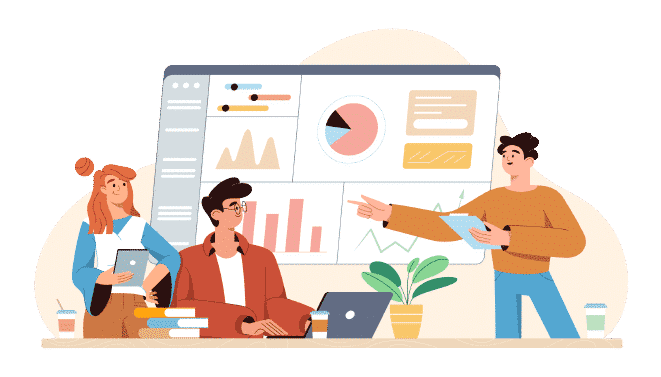Key Takeaways
| Question | Answer |
|---|---|
| What is a sponsorship? | A business agreement where a company (the sponsor) provides funding or other support to an event, team, or individual in return for marketing benefits. |
| Why do companies offer sponsorships? | To build brand awareness, reach new audiences, improve brand image, and drive sales. |
| What can you sponsor? | Events (sports, concerts, festivals), teams (sports, esports), individuals (athletes, artists, influencers), and even content (podcasts, videos). |
| How do you find sponsors? | Research companies whose values match yours, create a compelling sponsorship proposal, and network actively. |
| What should be in a sponsorship proposal? | Details about your event/team/individual, audience demographics, proposed benefits for the sponsor, and a clear budget. |
| How do you measure sponsorship success? | Track metrics like brand mentions, social media engagement, website traffic, and sales conversions. |
Introduction
Have you ever noticed the logos on a sports team’s jerseys, the name of a concert venue, or the brands supporting your favorite online creator? These are examples of sponsorships at work. Sponsorships are powerful agreements that allow individuals, events, and organizations to receive funding and support from businesses, while simultaneously offering brands valuable exposure. Understanding sponsorship basics is fundamental for anyone seeking funding, or for businesses looking for effective marketing opportunities. This article will provide a comprehensive overview of sponsorships, outlining how they function, their advantages, and how to secure beneficial partnerships. It’s a two-way street, a collaboration where both parties gain something valuable. This guide breaks down complex ideas into easily understood concepts, making it accessible regardless of prior experience.
What is a Sponsorship?
At its core, a sponsorship is a business deal. A sponsor, usually a company, provides financial or in-kind support—meaning things other than money, like equipment or services—to a sponsored entity. This could be an athletic team, a community event, a non-profit organization, an individual artist, or a content creator. In exchange for this support, the sponsor receives certain promotional rights and benefits.
Think of it this way: it’s not quite the same as advertising. Advertising generally involves paying for space to display a message. Sponsorship, on the other hand, involves a deeper association. The sponsor supports the activity, becoming linked to it in the public’s perception. It’s more about a partnership than a simple purchase. A sponsor isn’t just seen at an event; they’re part of it.
Why Companies Sponsor: The Benefits
Companies engage in sponsorships for a variety of reasons, all geared towards accomplishing their business objectives. Here are some key benefits:
- Brand Awareness: Sponsorships expose a brand to a new audience that might not have been reached through traditional advertising. Seeing a logo repeatedly builds familiarity.
- Brand Image: Aligning with a positive event, team, or individual can improve a brand’s reputation. If a company sponsors a charity run, it signals that they care about the community.
- Targeted Marketing: Sponsorships allow companies to reach specific demographics. A skateboarding competition sponsorship targets a youth demographic interested in action sports.
- Content Creation Opportunities: Sponsorships often provide material for marketing campaigns. Photos and videos from sponsored events can be used on social media and in advertisements.
- Hospitality & Networking: Sponsorship packages frequently include VIP access to events, providing opportunities for client entertainment and networking.
- Sales Opportunities: Ultimately, many sponsorships aim to drive sales. Increased brand awareness and a positive image can lead to more customers.
What Can Be Sponsored? A Wide Range of Options
The possibilities for sponsorships are almost limitless. Here’s a breakdown of common sponsorship categories:
- Events: These are the most common type of sponsorship. This includes sporting events (local races, professional games), concerts, festivals, conferences, trade shows, and charity events.
- Teams: Sports teams at all levels—from youth leagues to professional organizations—seek sponsors. Esports teams are a growing area for sponsorship.
- Individuals: This includes athletes, musicians, artists, actors, public speakers, and online influencers.
- Content: Podcasts, YouTube channels, blogs, and other forms of content can be sponsored. This usually involves a brand message integrated into the content itself.
- Facilities: Stadiums, arenas, theaters, and other venues often have naming rights available for sponsorship.
- Programs: Educational programs, community initiatives, or research projects can receive sponsorship support.
Understanding the Core Components of Sponsorship Basics
Successful sponsorships aren’t accidental. Several core components must be in place:
- Mutual Benefit: The arrangement must be advantageous for both the sponsor and the sponsored entity. The sponsor wants a return on their investment, and the event or individual needs the financial support.
- Clear Agreement: A written sponsorship agreement outlining the terms and conditions is vital. This document details the sponsor’s investment, the benefits they’ll receive, the duration of the sponsorship, and any specific requirements.
- Audience Connection: The sponsor’s target audience should align with the audience of the sponsored entity. There’s little value in sponsoring an event that your target customers won’t attend.
- Measurable Results: The agreement should include metrics for measuring the sponsorship’s success. This could include social media impressions, website traffic, or sales figures.
How to Find Sponsors: A Proactive Approach
Securing sponsorships requires effort and a strategic approach. Here’s how to get started:
- Identify Potential Sponsors: Research companies whose values and target audience align with yours. Think about businesses that would naturally appeal to your audience. For example, a running race might target athletic apparel companies, health food brands, and local fitness centers.
- Develop a Sponsorship Package: This is a document outlining the benefits of sponsoring you or your event. It details your audience, the promotional opportunities you offer, and the various sponsorship levels available (e.g., Gold, Silver, Bronze).
- Create a Compelling Proposal: The sponsorship proposal is your sales pitch. It should be clear, concise, and visually appealing. It should highlight the value you offer and demonstrate the potential return on investment for the sponsor.
- Network, Network, Network: Attend industry events, connect with potential sponsors on social media, and reach out directly to decision-makers. Building relationships is crucial.
- Follow Up: Don’t be afraid to follow up with potential sponsors after submitting your proposal. A polite reminder can make all the difference.
The Anatomy of a Strong Sponsorship Proposal
A well-crafted proposal is the cornerstone of securing sponsorship. It should include:
- Executive Summary: A brief overview of the sponsorship opportunity.
- About You/Your Event: Detailed information about your organization, event, or individual. Include your mission, history, and accomplishments.
- Audience Demographics: Detailed data about your audience—age, gender, income, interests, location, etc. This is critical for showing sponsors that you can reach their target market.
- Sponsorship Levels & Benefits: Outline different sponsorship packages with varying levels of investment and corresponding benefits. Benefits could include logo placement, social media mentions, speaking opportunities, and complimentary tickets.
- Budget: A clear breakdown of how the sponsorship funds will be used.
- Measurement & Reporting: Explain how you will track the sponsorship’s success and provide the sponsor with regular reports.
- Contact Information: Make it easy for potential sponsors to get in touch with you.
Measuring Sponsorship Success: What to Track
Measuring the effectiveness of a sponsorship is essential for demonstrating value and securing future partnerships. Some key metrics to track include:
- Brand Awareness: Monitor social media mentions, media coverage, and website traffic.
- Social Media Engagement: Track likes, shares, comments, and followers.
- Website Traffic: Analyze website visits and page views from referral sources.
- Lead Generation: If applicable, track the number of leads generated through the sponsorship.
- Sales Conversions: Link sponsorship activities to sales data to determine the direct impact on revenue.
- Surveys: Conduct post-event surveys to gather feedback from attendees and gauge brand perception.
Navigating the Challenges of Sponsorship Basics
Sponsorships aren’t always straightforward. Be prepared for potential challenges:
- Competition: Many organizations and individuals are actively seeking sponsorships, creating a competitive environment.
- Rejection: You won’t secure every sponsorship opportunity. Don’t take it personally and learn from each experience.
- Deliverables: Ensuring you fulfill all the agreed-upon deliverables can be demanding, requiring careful planning and execution.
- Relationship Management: Maintaining a strong relationship with your sponsors is crucial for long-term success. Regular communication and updates are essential.
Conclusion
Sponsorship basics are a powerful tool for both organizations seeking funding and businesses aiming to build brand awareness and connect with their target audiences. By understanding the principles outlined in this article – from crafting compelling proposals to measuring results – you can significantly increase your chances of securing successful and mutually beneficial partnerships. Remember that transparency, clear communication, and a commitment to delivering value are paramount. A well-executed sponsorship can be a win-win situation, fostering lasting relationships and contributing to the growth of both parties involved. A fundamental understanding of these basic principles will equip you to navigate the world of sponsorship confidently and effectively.

Youssef is passionate about crafting compelling and persuasive content and engaging online in social communities. With a knack for creative storytelling and a love for social media, he brings a fresh perspective to digital marketing. Youssef thrives in dynamic environments and enjoys the startup culture, where he can experiment and innovate.












